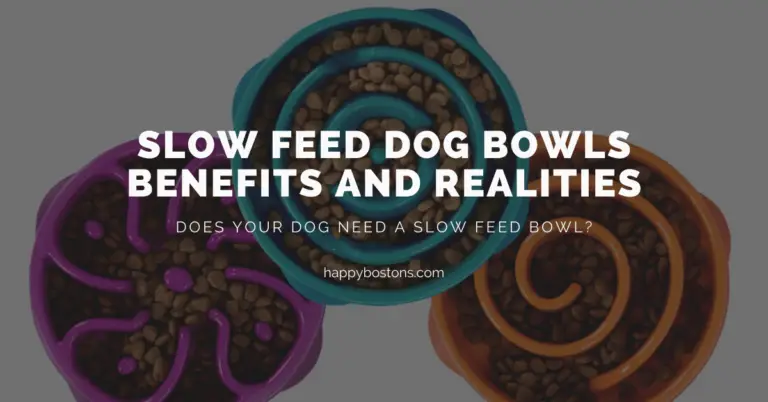Are Boston Terriers Color Blind? 10 Cool Dog Eye Facts
It never occurred to me to ask if dogs are color blind. A recent conversation sent me into research mode.
Boston Terriers, like all dogs, are red-green colorblind but are not limited to seeing only in black and white. Their rod-dominant eyes only have two types of cones, dichromatic, allowing them to distinguish yellows and blues. Reds and blues are seen as shades of yellow and grey. Dog vision is also less detailed than human vision.
I had a friend ask if Boston Terriers are color blind. Oh no, is there something weird about the eyes of Boston Terriers? Here’s what I found out.
Color Blind Boston Terriers?
Boston Terriers are no more or less color blind than other dogs.
It was long thought that dogs of all varieties were color blind. However, in 2013, a group of Russian scientists found that they were more likely to recognize a piece of paper by its color rather than its brightness in a small test group of eight dogs.
Their findings suggest that dogs can see color, although not the same as humans see color. To understand this, we must look at the eye itself.
Research has shown that dogs are not color-blind, but instead, they are visual spectrum challenged. This difference is similar to humans who are red-green color blind.
This means that they can see yellows and blues but cannot perceive other colors and instead see shades of grade.
Here’s an example of the spectrum difference from András Péter.


That’s why in the Russian researcher study, the colored paper that showed perception was yellow or blue.
So, why are Boston Terriers unable to see the full spectrum of colors as we do?
Dog vs. Human Eyes – What’s Different?
Let’s remember that dogs descended from a now-extinct wolf population.
They were nocturnal prey hunters and therefore needed to be able to see well in low-light situations.
According to the AKC’s chief veterinary officer, Dr. Jerry Klein, “For the purpose of hunting in the dark, canine eyes have a larger lens and corneal surface and a reflective membrane, known as a tapetum, that enhances night vision. They also have more rods, which improves low-light vision, in the retina.”
In both the human and dog eye, there are receptors called rods and cones.
Rods catch motion and work in low light. Cones work in bright light, provide for detailed vision, and are the key to color perception.
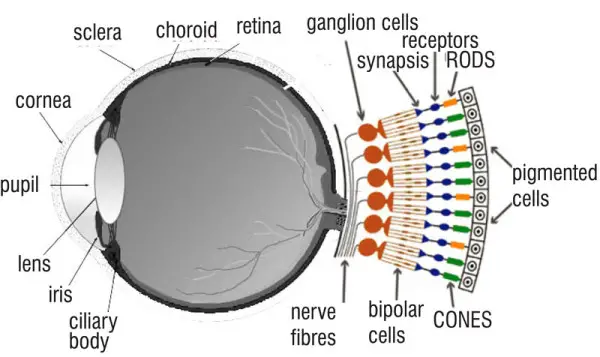
Human and canine eyes contain both rods and cones. So, what’s different?
It comes down to the quantity and type of cones and rods.
Cones come in different types, each responsible for detecting specific wavelengths of light. Ask a biologist who can geek out on this with you.
Humans are trichromats having three types of cones. Dogs are dichromats, having two types of cones, each detecting yellows or blues.
Dogs have few if any red-green detecting cones.
Also, dogs have fewer cones overall than the human eye. This lower cone count helps explain the poorer detailed vision in dogs than humans.
However, dogs have more rods than humans, so they can see better in the dark than we can.
What does dog vision look like?
Have you ever wondered, what do dogs see?
Thanks to András Péter of Dog-Vision, we can get a simulation of what we believe a dog sees.
Below is a side-by-side comparison of multi-colored dog play balls.
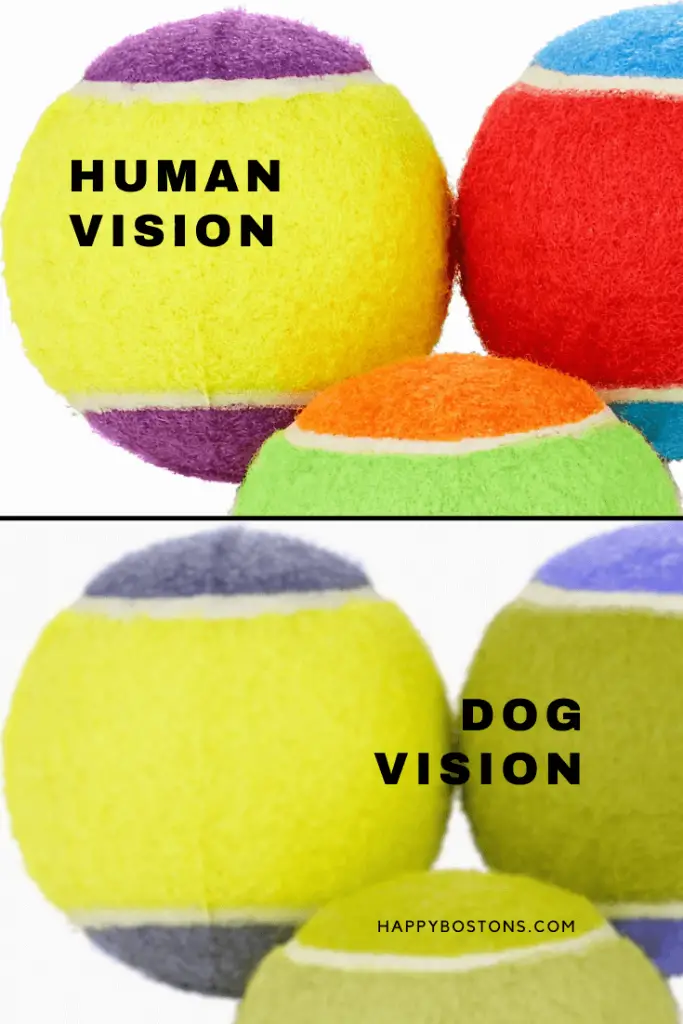
The top part of the image is the normal human vision of the play balls.
The bottom half is how canines may perceive the color of the balls. Notice that anything not yellow or blue is perceived as grey, blue or yellow.
In particular, reds and greens will appear as shades of yellow. (see the bottom ball in the picture above)
Also, notice that the bottom image looks out of focus. This demonstrates how the lack of cones makes for a less detailed vision for dogs.
What does this mean for my Boston Terrier?
Let’s start with the fact that your dog sees perfectly fine for its needs regardless of the rods and cones in its eyes.
As the hooman to your Boston, it may be time to think about toys and colors.
If your dog loses that new red Kong in the green grass, they aren’t dumb or lazy. Red and green will look about the same to your dog.
The next time you consider purchasing a dog toy, think about getting one that is yellow or blue. These will be easier for your dog to distinguish from grass or green rugs.
Kong, why are your products red?!?!?! 😉
Remember that reds and greens will appear as shades of yellow to your dog. Give them some variety and get some blue toys too!
Here are a couple of examples of products:
- Blue or Yellow Hyperflite Jawz Competition Dog Disc 8.75 Inch
- Jolly Pets Bounce-n-Play Dog Toy Ball – Blue
- Planet Dog Snoops and Nooks – Yellow Treat Dispensing Toy
Do Boston Terriers have bad eyesight?
No, Boston Terriers do not have bad eyesight in comparison with other dog breeds.
When compared to human vision, yes, all dogs have less detailed vision. This may be called bad eyesight by some people.
Don’t forget that dogs are able to see motion better than we can and they are able to see in lower light settings when we cannot without the aid of night-vision (NV) equipment.
Does my dog have blind spots?
Yes, dogs do have visual blind spots, but they are smaller than human blind spots.
Dogs have binocular vision for 60° in front of them.
90° to the left and right, they have uniocular (monocular) vision, meaning they see with a single eye.
That means that the remaining 120° to their rear is a blindspot.
In comparison, cats have a 260° blind spot, and horses only a 3°blind spot to their rear.
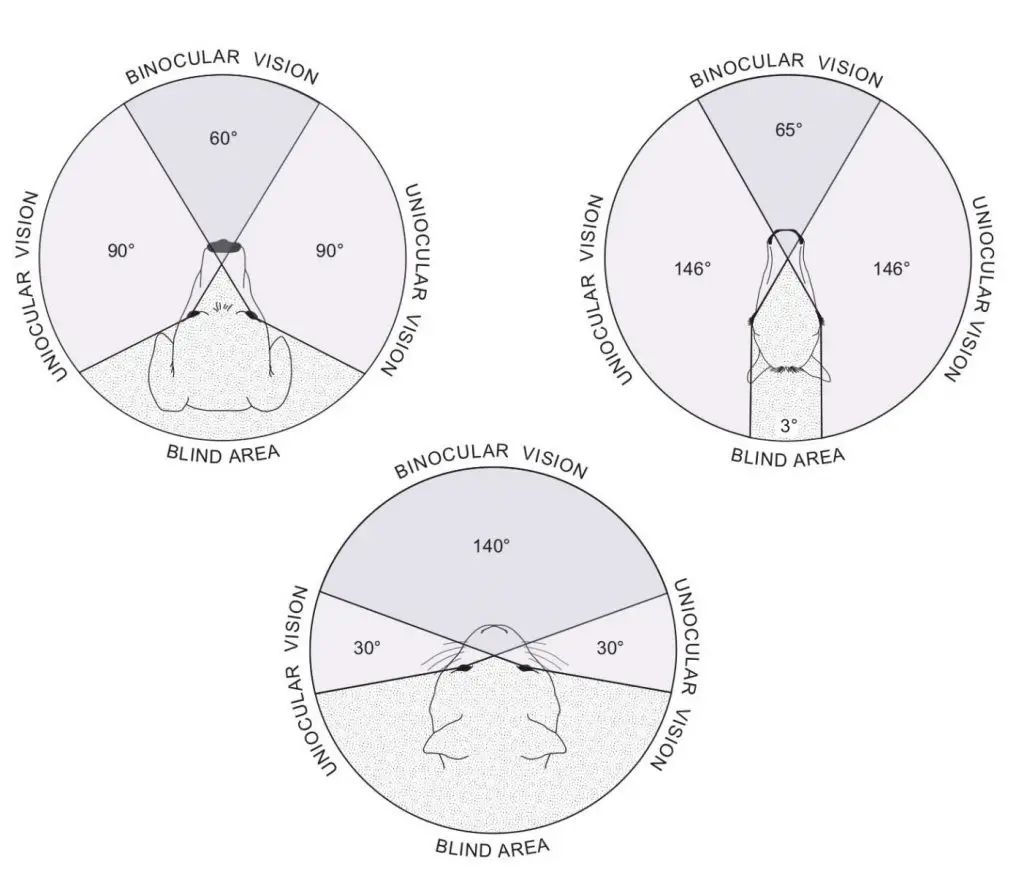
10 Dog Eye Facts – Boston Terriers
- Dogs can see yellows and blues, but not reds or greens as humans do.
- A dog’s eye contains more rods than a human giving it better night vision.
- Dogs can see 240° around their head.
- Dogs see less detail than humans due to lower cone counts in the eye.
- Dogs are dichromats; they see color with two types of cones.
- Dogs can see the flickering of images on a 60Hz TV, but not 120Hz.
- The visual acuity in dogs is 20/75, while humans have 20/20.
- Dogs have a third eyelid that helps protect the eye while sleeping and produce tears.
- A dog has a larger diameter cornea than humans (proportionally)
- Dogs track movement better than people because of their visual streak.
Answers In Video
Related Questions
Is a Boston terrier with blue eyes okay? They may be but have a vet check them out. Breeding of blue-eyed Boston Terriers is discouraged, as blue-eyed Boston Terriers are at higher risk for deafness.
What color is a dog most attracted to? Dogs are most attracted to the colors Blue and Yellow since these are the colors they can see. Other colors will be shades of grey, yellow and blue. Keep this in mind when selecting toys or using other visual cues for training.

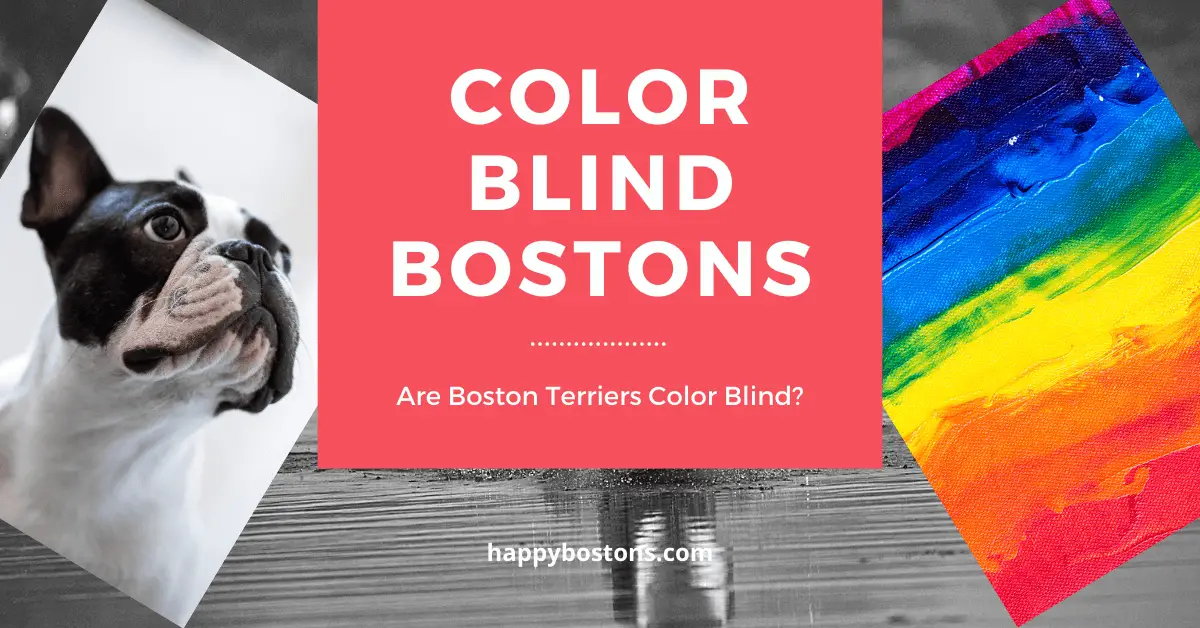
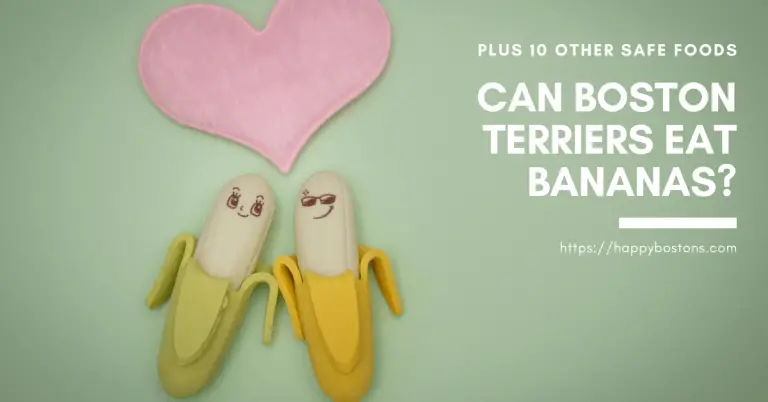



![Boston Terrier Itchy Skin [Ultimate Guide]](https://happybostons.com/wp-content/uploads/2021/02/Boston-Terrier-Itchy-Skin-Ultimate-Guide-768x402.png)
